Talk:Gudermannian function
| This article is rated C-class on Wikipedia's content assessment scale. It is of interest to the following WikiProjects: | |||||||||||
| |||||||||||
Inverse gd = arcgd[edit]
Since the Gudermannian function is a trig function, it would follow that its inverse is an arc function, therefore should be a valid notation. ~Kaimbridge~ 13:37, 23 February 2006 (UTC)
multiple problems[edit]
This page has multiple problems that need to be fixed. Most seriously, several of the definitions are only true for positive x and fail for negative x. For example, arccos(sech x) = |gd x|, not gd x.
The article on the tractrix no longer mentions the Gudermannian, so there is no reason to link to it. The connection is spelled out at the Wolfram site. It could be added to the article here, since it is rather interesting.
The wikipedia article on inverse hyperbolic functions prefers the name arcosh, not arccosh, and likewise for the other inverse hyperbolics.
gd is not a trig function and its inverse should not be designated by arc for the same reason given in the article above for not calling the inverse hyperbolic functions arcfunctions. An arcfunction should be something whose output is an arc, i.e., a number that could, in reasonable applications, be an angle in radians. In this sense, gd is an arcfunction, not its inverse.
Finally, the word "trigonometric" should be deleted in the first paragraph. The circular functions are another name for the trigonometric functions, and the hyperbolic functions are just so, and not "hyperbolic trigonometric". Hombre1729 (talk) 10:40, 3 April 2009 (UTC)
- I've just done a bunch of edits that I think may fix all the problems above. It's not altogether impossible that I missed some points. Michael Hardy (talk) 18:45, 3 April 2009 (UTC)
I'm gratified that there was such a quick response to my "to do" list. I'm a little new at this. Now let me go into more detail.
I went ahead and deleted the word "trigonometric" altogether, since "circular trigonometric" is redundant. The link "circular functions" redirects to "trigonometric functions", but here the words "circular" and "hyperbolic" stand in a nice contrast to each other.
arccos(sech x), arcsec(cosh x), and arccot(csch x) must all be removed from the list of definitions of gd x. But, lest someone come along and add them back in, it may be useful to say, immediately after the definitions, "Some related formulas don't quite work as definitions because, for real x, arccos(sech x) = |gd x| = arcsec(cosh x) and arccot(csch x) = \cases gd x if x > 0 \\ pi + gd x if x < 0 \endcases (See inverse trigonometric functions.)" Note also that arccsc(coth x) fails to give a value when x = 0, but its limit there, at least, agrees with gd 0. Should we point this out or let it go?
Moving on to the definitions of gd inverse, we should change the first line to "The inverse Gudermannian function is defined, on the interval -pi/2 < x < pi/2, by" because ln|sec x + tan x|, among others, is defined more widely than that. Once that change is made, all the absolute value signs may be changed to parentheses or brackets in all the definitions, since the functions contained in them will each be positive.
Is the definition with sec x(1 + sin x) really needed? It is a rather trivial variation on sec x + tan x.
arsinh(tan x) and artanh(sin x) are perfectly good definitions of gd inverse and could be added back in. As you pointed out below that, arcosh(sec x) is not a complete definition, although there I would replace "values of x for which sec x > 0" by "0 le x < pi/2" because the former inequality can be true even when gd inverse is not defined.
Now that the definitions have been addressed, let me reiterate that the article on the tractrix no longer mentions the gudermannian. So, unless we want to go edit that article, the reference to tractrix under "see also" should be deleted. The connection, as I said, can be found on the Wolfram site, but now that I think about it more, there is an error there that we don't want to repeat. So here is what we could say.
"If a tractrix is parametrized by x = t - tanh t and y = sech t then the slope of the tangent line to the curve is given by -csch t. Therefore the angle that the tangent line makes with the y axis is gd t." Is this interesting enough to include here?
Perhaps a more important application that I didn't mention before is that, "pi/2 - gd x is the angle of parallelism function in hyperbolic geometry."
The article on the hyperbolic secant distribution also fails to mention gd, but the connection is pretty obvious. If a probability density function is defined by (1/2)sech(pi x/2), then its cumulative distribution function must be (1/ pi)gd(pi x/2) + 1/2.Hombre1729 (talk) 10:25, 5 April 2009 (UTC)
- I'm going to go through what you wrote carefully.
- In the mean time: you have a very odd way of using the word "definition", as if any characterization were a definition. "Definition" is one of those words that need to be used with complete precision in mathematics, normally introduced in about 9th grade and seen incessantly all the way through high school and then for the rest of one's career without much refinement beyond what one was taught initially. Michael Hardy (talk) 15:27, 5 April 2009 (UTC)
You make a valid point, although I believe my use of the word "definition" is in reaction to the way the article was already written and not characteristic of my usual way of doing things. This article has multiple definitions of both gd and gd inverse (or, at least, in the first case the phrase is "is defined by" and in the second case it is "is given by") and I don't see any compelling reason to change that. Had things been otherwise, though, we might agree to have one definition for each and then assert that the others can be derived as identities. Is this what you meant? Hombre1729 (talk) 03:44, 6 April 2009 (UTC)
-
arccos(sech x)
-
arccot(csch x)
-
arccsc(coth x)
-
arcsec(cosh x)
-
arcsin(tanh x)
-
arctan(sinh x)
after seeing these graphs of these functions, it is able to be said:
1.arccsc(coth x) , arcsin(tanh x) ,and arctan(sinh x) ,are perfectly good definitions of gd.
2.arccos(sech x) , arcsec(cosh x) aren't ,but in french wikipedia ,these two can be replaced with sgn(x)arccos(sech x) and sgn(x)arcsec(cosh x).
3.arccot(csch x) isn't perfectly good definitions of gd.
Akjz (talk) 17:15, 20 February 2015 (UTC)
-
arcosh(sec x)
-
arcoth(csc x)
-
arcsch(cot x)
-
arsech(cos x)
-
arsinh(tan x)
-
artanh(sin x)
after seeing these graphs of these functions, it is able to be said:
on the interval -pi/2 < x < pi/2
1.arcoth(csc x) , arcsch(cot x) , arsinh(tan x) ,and artanh(sin x) ,are perfectly good definitions of gd inverse.
2.arcosh(sec x) , arsech(cos x) aren't ,but in french wikipedia ,these two can be replaced with sgn(x)arccosh(sec x) and sgn(x)arcsech(cos x).
Akjz (talk) 17:27, 20 February 2015 (UTC)
References[edit]
I'm not familiar with how to edit the {reflist} on this page, so I was wondering if someone else could make this edit for me -- the book "Hyperbolic Functions", which is cited in Note 1, was written by George F. Becker and C.E. van Orstrand. (not "Georg", as it says now.) —Preceding unsigned comment added by 121.107.184.243 (talk) 05:32, 15 January 2011 (UTC)
Spring clean[edit]
I got rather over enthusiastic after carrying out a simple edit.
New info and improved references is uncontoversial.
I have restored arc for the inverse hyperbolic functions. This is good enough for NIST (see ref number 1). I suspect the six letter nomenclature dates from the days of early Fortran when all names were so restricted.
The statement about the unsuitability of some definitions needs to be reworded and clarified a little without unbalancing the paragraph.
Please check my changes carefully. Most are cosmetic.
Peter Mercator (talk) 18:09, 2 February 2015 (UTC)
Gudermanian not explicitly mentioned in Casimir reference[edit]
Good, Michael R. R.; Anderson, Paul R.; Evans, Charles R. (2013). "Time dependence of particle creation from accelerating mirrors". Physical Review D 88 (2): 025023. arXiv:1303.6756. Bibcode:2013PhRvD..88b5023G. doi:10.1103/PhysRevD.88.025023, does not explicitly reference the Gudermanian. If someone knows where the implicit reference is, could you please clarify the reference? — Preceding unsigned comment added by Hcarter333 (talk • contribs) 01:06, 20 July 2016 (UTC)
Clarifying/unifying notation for identities[edit]
I wonder if it would make sense to pick 3 variable names for a circular-function argument, a hyperbolic function argument, and the stereographic projection (geometrically, these are twice the areas of a circular sector, twice the area of a hyperbolic sector, and twice the area of a triangle, respectively), and then consistently use those instead of calling the arguments all x. Then it’s easy to prove/demonstrate all of the identities here by (a) simple rational calculations in terms of the stereographic projection, and (b) geometric intersections.
But I don’t know what the right variable names are to pick. Common names for circular-function argument (coincidentally also the arc length of a circle) include θ and φ, and φ seems especially relevant in this context since it is typically used represent latitude or colatitude. In the figures here (which I would be happy to change) In the figures I just added, I used the variable ψ for hyperbolic argument but I’d be happy to swap it for something else, e.g. u (Cayley’s variable name), χ, or η. For the stereographic projection I could imagine using e.g. σ or h for half-tangent. I used a latin letter for contrast because all of the coordinates here in terms of stereographic projection are rational quantities, whereas in terms of circular/hyperbolic argument they are transcendental. But I’m not wedded to those.
Does anyone have any preferences / any pointers to standard symbols? Does using the same symbol for each thing for most of the article make sense? (In a section about complex definitions it could perhaps switch to the letters like z, ζ, w.) –jacobolus (t) 01:34, 29 June 2022 (UTC)
- If just for the sake of example we kept the symbols , I am imagining writing the “identities” section along the lines of:
- And then there’s no need for separate identities sections for forward/inverse functions. –jacobolus (t) 01:59, 29 June 2022 (UTC)
- Or we could use υ and κ for the greek letters for hyperbola and circle, respectively. –jacobolus (t) 03:19, 29 June 2022 (UTC)
Image error[edit]
The second image shows , missing an h. --2607:FEA8:86DC:80E0:21E1:ADE:6B93:28DF (talk) 19:01, 18 July 2022 (UTC)
mobile issues[edit]
the two equations first defining the real abs real inverse functions psi and phi are not displaying correctly on mobile. they cut off right after the integral is complete, the page won't allow scrollling over or zooming out, and when i rotate the display, the definitions are cut off by the captioned images. don't know what would go into fixing this up, but this page could use that fix. not sure if other equations or other mobile devices are having the same issue, but im dropping this here because i can 2600:6C47:A0F0:8390:DCAA:D8AA:912D:67DC (talk) 15:15, 31 May 2023 (UTC)
- adding - yes it applies to the whole article, multiple functions are cut off. and side scroll is disabled. other pages have embeded the function images in an individual side-scrollable format or allow side-scrolling for the whole page. 2600:6C47:A0F0:8390:DCAA:D8AA:912D:67DC (talk) 15:17, 31 May 2023 (UTC)
- Did that solve it? –jacobolus (t) 15:53, 31 May 2023 (UTC)
- YES!!!! thank you so much for the prompt edit :D now i can read more math!!! thank you again ^_^ -K 2600:6C47:A0F0:8390:F496:6307:4839:CA22 (talk) 15:29, 13 June 2023 (UTC)
- Did that solve it? –jacobolus (t) 15:53, 31 May 2023 (UTC)
Explicit formulas involving a single variable (rather than two)[edit]
The new presentation by Jacobolus is much better than the original on the whole. It is clearer and more comprehensive.
There is only one thing the previous version had that the new version is missing: an list of simple explicit formulas involving just a single variable (rather than two). That was a very helpful reference in the previous version, and I know it's useful to the community because I, myself, regularly visited the page when it had those identities because I needed them for a research paper. (I'm a Professor of Theoretical Physics at an Australian university.)
It's okay to hide them away somewhere else to keep the presentation clear. But I would like to see them included somewhere. Shiznick (talk) 00:51, 20 February 2024 (UTC)
- I have a number of issues with the formula pile:
- Many of these formulas are not coming from reliable sources (see WP:OR, WP:RS), and were originally added to Wikipedia with no cited source at all. Mathworld, blogs, arXiv preprints, and stack exchange answers don't count as reliable (we are already leaning more than I would like on such self-published sources). I already explicitly kept most of the formulas I could find in reliable published sources (and some that I only found in questionable online sources), after doing a decent amount of source hunting.
- These formulas are trivial consequences of the relations given earlier (and hopefully also sufficiently conceptually justified). It is entirely unnecessary to e.g. redundantly add both and in addition to already having when we already know that
- They make a huge space-wasting distraction that gets in readers' way. Wikipedia articles are supposed to be explanatory summaries of a topic, not an indiscriminate collection of formulas; indeed the article as it is already strays a bit far in that direction, and definitely doesn't need more formula pile-on. If you want a big pile of formulas some other venue is a better place to publish it.
- There's no clearly defined end to the list. If we're just making up every unsourced formula we can think of, I could probably triple the existing list after a bit of thinking. The existing list doesn't have any text or other indicators justifying the inclusion of any particular formula, which means there's no obvious criterion for when to stop.
- Several of these formulas, even ones where past sources can be found, are quite tricky to get right in all the edge cases, and are incorrect to state baldly without a careful set of qualifiers/conditions, which past authors have often not been careful to do. Actually including all of the appropriate conditions is borderline original research.
- We want to make sure that someone trying to implement this numerically on their computer uses well-behaved versions such as and (valid and numerically well behaved for real values of and with ) rather than alternatives with poor accuracy for some inputs; the previous pile of expressions for or very easily leads people astray.
- –jacobolus (t) 01:55, 20 February 2024 (UTC)
- @Shiznick What was your research paper, if you don't mind my asking? I'd love to see the areas of this article about practical applications expanded and fleshed out; I imagine it could be multiple sections full of paragraphs instead of a few bullet points. –jacobolus (t) 02:29, 20 February 2024 (UTC)
- For what it's worth, some of these identities are in DLMF (4.23.40 and 4.23.42), which is cited in this article. I do agree that aside from the sourcing issues, this is an encyclopedia, not a handbook of function identities. I have often thought that there should be a WikiBooks equivalent of the Digital Library of Mathematical Functions and Abramowitz and Stegun, which could go further into depth than either of those. Apocheir (talk) 00:50, 21 February 2024 (UTC)
- Specifically, DLMF has:
- Specifically, DLMF has:
- We also currently explicitly include some of them already (while describing them as "examples"). Quoting:
- These are commonly used as expressions for and for real values of and with For example, the numerically well-behaved formulas
- [...] These give further expressions for and for real arguments with For example,
- These are commonly used as expressions for and for real values of and with For example, the numerically well-behaved formulas
- I skipped some of the others because they are problematic for people to use for practical calculations (note, both and should also be avoided, as they cause catastrophic cancellation for some inputs), and also already clearly implied by the other relations currently included. –jacobolus (t) 02:56, 21 February 2024 (UTC)
- We also currently explicitly include some of them already (while describing them as "examples"). Quoting:
- @Shiznick I hope I didn't scare you away here by my flurry of activity; I wasn't intending that to be intimidating or aggressive. All the best. –jacobolus (t) 07:03, 3 March 2024 (UTC)
Formula pile[edit]
To keep the discussion clear for anyone looking in, below are reproduced the extra formulas under discussion. –jacobolus (t) 02:39, 20 February 2024 (UTC)
Letting be a circular angle measure and be a hyperbolic angle measure....
Here is a collection of some equivalent ways to represent :
Here are explicit expressions for the hyperbolic trig functions using the circular ones:
Here is a collection of some equivalent ways to represent (assuming ):
Here are explicit expressions for the circular trig functions using the hyperbolic ones:



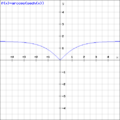

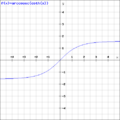

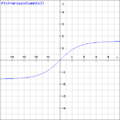

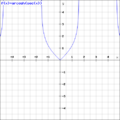
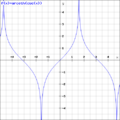





![{\displaystyle {\begin{aligned}s&=\tan {\tfrac {1}{2}}\varphi =\tanh {\tfrac {1}{2}}\psi \\[10mu]{\frac {2s}{1+s^{2}}}&=\sin \varphi =\tanh \psi \quad &{\frac {1+s^{2}}{2s}}&=\csc \varphi =\coth \psi \\[10mu]{\frac {1-s^{2}}{1+s^{2}}}&=\cos \varphi =\operatorname {sech} \psi \quad &{\frac {1+s^{2}}{1-s^{2}}}&=\sec \varphi =\cosh \psi \\[10mu]{\frac {2s}{1-s^{2}}}&=\tan \varphi =\sinh \psi \quad &{\frac {1-s^{2}}{2s}}&=\cot \varphi =\operatorname {csch} \psi \\[8mu]\end{aligned}}}](https://wikimedia.org/api/rest_v1/media/math/render/svg/9abb028ac2358bb7347dcf35a4ceb59713ffb9b5)












![{\displaystyle {\begin{aligned}\operatorname {gd} x&=2\arctan(e^{x})-{\tfrac {1}{2}}\pi =\arcsin(\tanh x)=\operatorname {arccsc}(\coth x)\\[3mu]&=\arccos(\operatorname {sech} x)=\operatorname {arcsec}(\cosh x)=\arctan(\sinh x)=\operatorname {arccot}(\operatorname {csch} x).\\[10mu]\operatorname {gd} ^{-1}(x)&=\ln \tan {\bigl (}{\tfrac {1}{2}}x+{\tfrac {1}{4}}\pi {\bigr )}=\ln(\sec x+\tan x)=\operatorname {arcsinh} (\tan x)=\operatorname {arccsch} (\cot x)\\[3mu]&=\operatorname {arccosh} (\sec x)=\operatorname {arcsech} (\cos x)=\operatorname {arctanh} (\sin x)=\operatorname {arccoth} (\csc x).\end{aligned}}}](https://wikimedia.org/api/rest_v1/media/math/render/svg/4213a124eae3aeb63113eede8354297b53463312)



![{\displaystyle {\begin{aligned}\operatorname {gd} \psi &=\operatorname {arctan} (\sinh \psi ),\\[6mu]\operatorname {gd} ^{-1}\phi &=\operatorname {arsinh} (\tan \phi ).\end{aligned}}}](https://wikimedia.org/api/rest_v1/media/math/render/svg/1cbb02476a2f58f8303e30dde2cd910b3357ea87)
![{\displaystyle {\begin{aligned}\operatorname {gd} \psi &=2\arctan e^{\psi }-{\tfrac {1}{2}}\pi ,\\[6mu]\operatorname {gd} ^{-1}\phi &=\log(\sec \phi +\tan \phi ).\end{aligned}}}](https://wikimedia.org/api/rest_v1/media/math/render/svg/e9899f14b480bfe2561cb64a139a22f14cd0c16d)



![{\displaystyle {\begin{aligned}\operatorname {gd} \psi &=\arcsin \left(\tanh \psi \right)=\arctan(\sinh \psi )=\operatorname {arccsc} (\coth \psi )\\[6pt]&=\operatorname {sgn}(\psi )\arccos \left(\operatorname {sech} \psi \right)=\operatorname {sgn}(\psi )\operatorname {arcsec} (\cosh \psi )\\[6pt]&=2\arctan {\bigl (}\tanh {\tfrac {1}{2}}\psi {\bigr )}\\[6pt]&=2\arctan \left(e^{\psi }\right)-{\tfrac {1}{2}}\pi =-i\ln \left(\operatorname {sech} \psi +i\tanh \psi \right)\\[6pt]&=-{\frac {i}{2}}\ln \left({\frac {1+i\sinh \psi }{1-i\sinh \psi }}\right)=-i\ln \left({\frac {1+i\sinh \psi }{\cosh \psi }}\right)\\[6pt]&=-i\ln \left({\frac {1+i\tanh {\tfrac {1}{2}}\psi }{1-i\tanh {\tfrac {1}{2}}\psi }}\right)=-i\ln {\Bigl (}i\tanh {\tfrac {1}{2}}{\bigl (}\psi -{\tfrac {1}{2}}i\pi {\bigr )}{\Bigr )}~.\end{aligned}}}](https://wikimedia.org/api/rest_v1/media/math/render/svg/079c5511712b0f68b0c442b61989b4b7e9f3bda7)
![{\displaystyle {\begin{aligned}\sin(\operatorname {gd} \psi )&=\tanh \psi ,&\csc(\operatorname {gd} \psi )&=\coth \psi ,\\[6pt]\cos(\operatorname {gd} \psi )&=\operatorname {sech} \psi ,&\sec(\operatorname {gd} \psi )&=\cosh \psi ,\\[6pt]\tan(\operatorname {gd} \psi )&=\sinh \psi ,&\cot(\operatorname {gd} \psi )&=\operatorname {csch} \psi ,\\[6pt]\tan {\tfrac {1}{2}}(\operatorname {gd} \psi )&=\tanh {\tfrac {1}{2}}\psi .\end{aligned}}}](https://wikimedia.org/api/rest_v1/media/math/render/svg/82f11e8fd0b3c9907c38e7a73ae82954267f1fa1)

![{\displaystyle {\begin{aligned}\operatorname {gd} ^{-1}\phi &=\int _{0}^{\phi }\sec t\,\mathrm {d} t\qquad {\text{ for }}\quad -{\tfrac {1}{2}}\pi <\phi <{\tfrac {1}{2}}\pi \\[8pt]&=\ln \left|{\frac {1+\sin \phi }{\cos \phi }}\right|={\frac {1}{2}}\ln \left|{\frac {1+\sin \phi }{1-\sin \phi }}\right|=\ln \left|{\frac {1+\tan {\tfrac {1}{2}}\phi }{1-\tan {\tfrac {1}{2}}\phi }}\right|\\[8pt]&=\ln \left|\tan \phi +\sec \phi \right|=\ln \left|\tan {\tfrac {1}{2}}{\bigl (}\phi +{\tfrac {1}{2}}\pi {\bigr )}\right|\\[8pt]&=\operatorname {artanh} (\sin \phi )=\operatorname {arsinh} (\tan \phi )\\[6pt]&=2\operatorname {artanh} \left(\tan {\tfrac {1}{2}}\phi \right)\\[6pt]&=\operatorname {arcoth} (\csc \phi )=\operatorname {arcsch} (\cot \phi )\\[6pt]&=\operatorname {sgn} (\phi )\operatorname {arcosh} (\sec \phi )=\operatorname {sgn} (\phi )\operatorname {arsech} (\cos \phi )\\[6pt]&=-i\operatorname {gd} (i\phi )~.\end{aligned}}}](https://wikimedia.org/api/rest_v1/media/math/render/svg/44daf146a59b17abdc442d3d5116e76b2e76fa41)
![{\displaystyle {\begin{aligned}\sinh \left(\operatorname {gd} ^{-1}\phi \right)&=\tan \phi ,&\operatorname {csch} \left(\operatorname {gd} ^{-1}\phi \right)&=\cot \phi ,\\[6pt]\cosh \left(\operatorname {gd} ^{-1}\phi \right)&=\sec \phi ,&\operatorname {sech} \left(\operatorname {gd} ^{-1}\phi \right)&=\cos \phi ,\\[6pt]\tanh \left(\operatorname {gd} ^{-1}\phi \right)&=\sin \phi ,&\coth \left(\operatorname {gd} ^{-1}\phi \right)&=\csc x,\\[6pt]\tanh {\tfrac {1}{2}}(\operatorname {gd} ^{-1}\phi )&=\tan {\tfrac {1}{2}}\phi .\end{aligned}}}](https://wikimedia.org/api/rest_v1/media/math/render/svg/aa6cb922244dc0f8cfdc58b6cf73c72908fbc428)